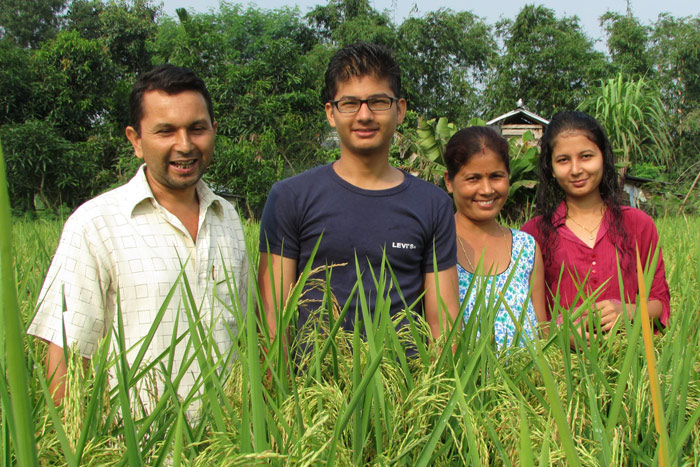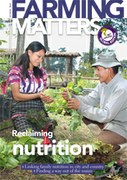The many plants in Laxmi Acharya’s farm means that it is often mistaken for a miniature botanical garden. She needed more food for her family. But with so little land, she chose diversity.
“My name is Laxmi Acharya. With help from my husband and children, I manage a small family farm in Belepur, in the Koshi-Harincha municipality of Morang district, Nepal. Our farm is often mistaken for a miniature botanical garden, which is no surprise given the diversity of plants and animals found there. We needed more food for the family, but we had only a small parcel of land. So we chose diversity.
Our farm covers only 2000 square metres, and well managed diversity is the key to its productivity. Six hundred square metres are occupied by the house, fruits and vegetables. I keep a pair of cows, a pair of goats, 10 pairs of pigeons and 10 chickens. I also have a fish pond with about one hundred mungri catfish. On the remainder of our land, we grow scented Basmati rice using the agroecological System of Rice Intensification.
We get the most nutritional value from crop rotations and from the complementarities between our plants and animals. For example, during the rainy season we grow rice, and after harvesting, we plant potato, mixed with mustard for cooking oil, and lentils and other vegetables for extra food and income. In spring, we plant maize which is used for home consumption as well as for animal feed. Our cows, goats and poultry, in turn, provide the manure that has improved and maintains the structure and fertility of the soil. I am proud to produce enough to fill the plates of my family with all the necessary cereals, vegetables, fruits and animal protein for an adequate and balanced diet, and even be able to sell our surplus on the market.”
Interview by Raj Uprety, student at Tribhuvan University and Rajendra Uprety, senior agricultural development officer in Morang district, Nepal.


